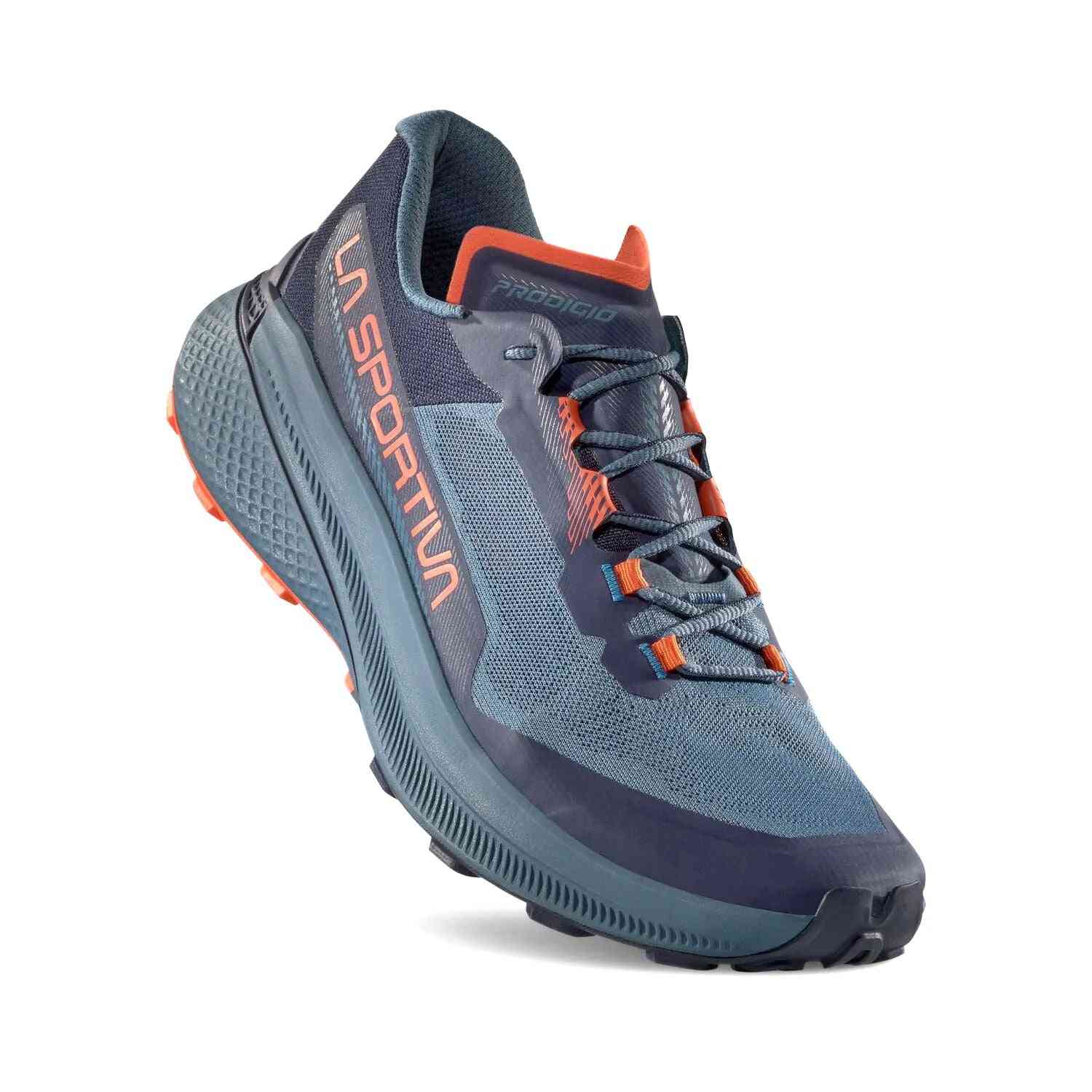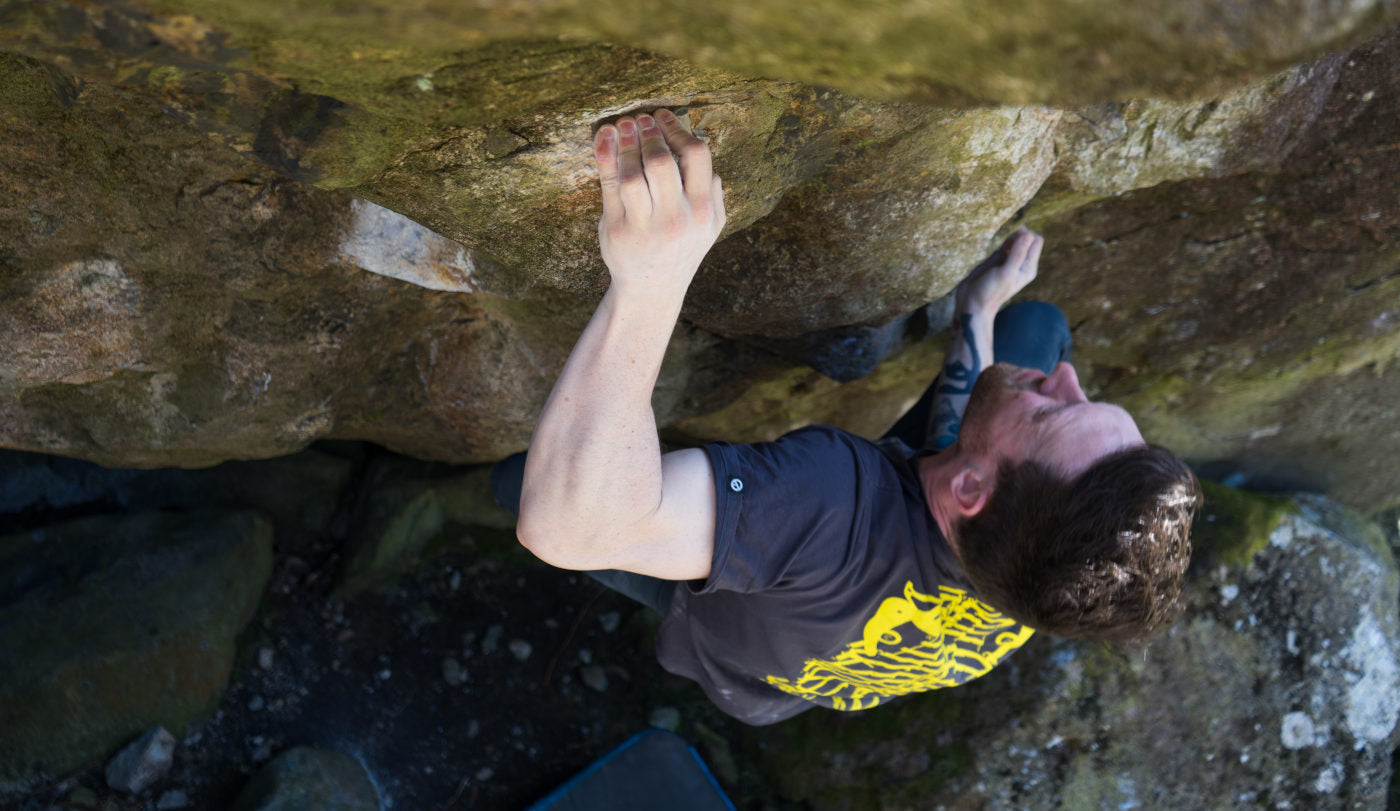By Rock + Run
Principals
Fingerboards are most effective at training contact strength and general upper body strength. Contact strength, also referred to as finger strength, is simply the ability to hold onto the holds (as opposed to the ability to move between the holds). It is the single most important type of strength for a climber to have. If you can't even hold onto the grips, there is no way you will be able to move between them.
Fundamentals
How to Grasp the Grips: You want to use an open-handed grip as often as possible. Most climbers are weaker open-handed than crimped, so you may find this difficult at first, but you'll get used to it. Training open-handed will increase your crimp strength (but not vice-versa), and it is essential for holding pockets, slopers, and certain edges, as well as making moves at maximum stretch and catching dynos. Most importantly, however, using an open hand lowers the potential for injury. As you adapt to training, you can incorporate a little crimp training to increase your maximum edge-holding power, but keep it to a minimum. Warm Up, Warm Down: It is critical to warm up thoroughly. You can start by climbing, bouldering, or doing easy pull-ups and dead hangs, along with gentle stretching. Make the first 15 minutes ridiculously easy and gradually increase the intensity until you're at full power. Reverse this process at the end of your session to prevent injury and speed up recovery. The warm down should be even easier than the warm up. It should feel as if you're doing almost nothing. The idea is just to keep the blood flowing for 15 or 20 minutes after the high intensity part of your workout. Recovery: To maximize your gains and prevent injury, you should always be fully recovered before a training session. Not resting enough between workouts will soon lead to a plateau, quickly followed by injury and burnout. If it takes you longer than normal to feel warmed up, or if you haven't noticed any improvement in 3 or 4 sessions, you probably need more rest. Listen to your body and be flexible with your training schedule. Making It Easier: If you find certain exercises or holds too difficult at first, you can put one foot on a chair or have a training partner assist you to take off as much weight as necessary. Be sure to have a clean, open, well-padded landing area, as an awkward, off-balance fall is a greater possibility when your feet are helping to take your weight.
Ten Minute Sequence
The 10 minute sequence consists of 10 tasks, one performed at the start of each minute with the remaining time used to rest until the start of the next minute. It is an excellent format for training both strength and stamina in the same workout, for improving your recovery, or just for warming up. It is also a great way to simulate the demands of your current project. We have included two sample routines, but the ten-minute sequence is most effective when you custom tailor it to your own personal needs. Be creative and don't limit yourself. It could be five minutes or thirty minutes; you could do it in 45 second cycles or two-minute cycles. Experiment with your training and keep it as varied as possible.
More Exercises
- Dead Hang: This is the fundamental exercise for developing contact strength. You should master the dead hang on any particular hold before attempting any other exercise on that hold. Never lock you elbows completely. Always keep a slight bend to prevent injury.
- Bent Arm Hang: A variation of the dead hang which will begin to develop your ability to pull through and lock-off. This can be done at any angle, and should be varied as much as possible. Pull yourself up to the designated angle and hold a static contraction for the designated amount of time. Be careful of doing maximal contractions at full lock-off, as they can be as injurious as fully locked-out elbows.
- Offset Hangs: Begin as with the bent arm hang. Shift your weight all the way to one side and hold a contraction. Shift your weight laterally, all the way to the other side, without lowering your body and hold an equal contraction. Repeat. Vary the angle of your lock-off, the duration of your lock-off, and the number of repetitions.
- Pull-ups: Try to be as smooth as possible. Don't jerk, kip, swing, or otherwise cheat. Keep your lower body quiet. Don't lock your elbows completely at the bottom. Focus on maintaining perfect form, and don't worry about the number of repetitions.
- Offset Pull-ups: The first step to one-arm pull-ups. Position yourself with your weight centered under one arm, as if to do a one-arm pull-up. Choose a lower hold with the other hand and give yourself just enough assistance to complete the exercise.
- One-arm Pull-ups: Now you really have some power! Follow the same guidelines as for pull-ups but pronate your arm more. If you're getting close, but can't quite do one-arms, do an offset pull-up, but perform the negative contraction (lower yourself) as a pure one-arm. The potential for injury is very high, so it is absolutely critical to be smooth. Don't bounce!
- L-Hang: The emphasis here is on core strength. Choose a hold that you're fairly comfortable on. You can dead hang or bent arm hang. Pull your legs up from the hips, keeping your knees straight and your toes pointed. Hold a static contraction with your legs at 90 degrees to your torso or do slow repetitions raising your legs as far as you can but only lowering to about 45 below horizontal. If you lower you legs all the way, it will take the tension off your abs and constitute a rest. The idea is to keep your abdominal muscles contracted the entire time. If straight leg raises are too difficult, bend your knees at a 90 degree angle.
- Front Lever: Work up to these by performing them first with both legs bent at the knees, and then with one leg straight and one bent. If you can do a good front lever, try it with one arm.
Cyclic Periodization
We would next like to introduce cyclic periodization as a method for planning a year of training. As an overview strategy, cyclic periodization allows you to be at your peak when you want to be. Properly done, chances of injury and mental burnout are minimized. Also, the amount of time you spend stuck at conditioning and strength plateaus tends to decrease. Our version of cyclic periodization consists of five major cycles, which are sequentially organized to cover an entire climbing/training year. The five major cycles are as follows:Conditioning Cycle
During this cycle, you should train at 60 to 70% of your maximum effort (if you can hang fully rested for one minute, then 65% intensity would be hanging 40 seconds). The volume of work should be moderate, with long hang times and many repetitions. Spend one to two days a week in the gym during this cycle. Do not push yourself to absolute failure. This period serves as a warm-up and active rest cycle. As a warm-up, the conditioning phase prepares the body for the intense training to come. As an active rest phase, it assures that no major de-conditioning occurs, while providing a mental and physical break from strenuous workouts.Load Cycle
During this cycle, you should train at 70 to 80 % of your maximum effort. The volume of work should be moderate to high with long hang times and many repetitions. Three to five days per week should be spent in the gym. The load cycle builds endurance, connective tissue and some muscle strength and provides specific movement. During this phase, work in micro cycles of a hard day, easy day and moderate day. Then, repeat the micro cycle with more weight and/or longer hang times. During the last part of the load cycle, you will actually be weaker than in the middle of the cycle due to the high volume. In this endurance-oriented phase, you should only occasionally be pushing yourself to your absolute failure point. Strenuous climbing days may occasionally be substituted for time in the gym.Recovery Cycle
During the recovery cycle you should train lightly at 50 to 60% of your maximum effort. The volume of work should be low, with short hang times and few repetitions. Spend no more than one to two easy days a week in the gym during this phase. The recovery phase prepares your body for the upcoming intense.Peak Cycle
During the peak, you should train at 80 to 100% of your maximum effort. The volume of work should be low with high resistance, low hang times, and few repetitions. Two to three days a week should be spent in the gym during this phase. The peak cycle produces maximum strength and power (muscle hypertrophy). As in the load cycle, work in a hard/easy/moderate micro cycle. In this phase, you should usually be pushing yourself to your maximum. Many climbers will need to hang weights from their waist to keep the hang times short. Unlike the load cycle, climbing days cannot substitute for gym days during this phase. Off Cycle During the off cycle, you should spend no time in the gym whatsoever. Your body will now be peaked to climb very hard. Now comes the tricky part is combining these cycles with your climbing time. You must be sure to spend enough time on the rock during your training to insure that you will be climbing well when your peak arrives. Ideally, this should occur just as the weather begins to improve. The following table shows what gym and climbing time might look like using cyclic periodisation to plan a year of training at Metolius's home area Smith Rock. Starting at the end of the usual climbing season in early November.
These are only general guidelines. The specific variables are up to you. For example, how will you alter your late peak cycle training to accommodate serious redpoint attempts? How much climbing do you want to do over the entire year? This adapting of cyclic periodization to fit your own needs results in a training schedule you'll be much happier with. GOOD LUCK!
Information courtesy of Metolius.
Warning All Training Board Users: Training on a hangboard carries risk of injury to fingers, arms, shoulders and the joints connecting them. Take every precaution to avoid damage to yourself; warm-up, stretch, don't overtrain and listen to your body. Remember, even under the best of circumstances, injuries can occur. In addition, however you mount your board, be sure that it cannot move in any direction. There should be no possible way for the board to come down while training.


















